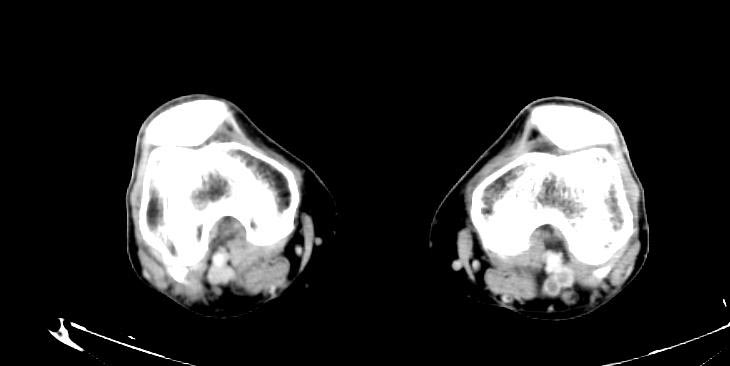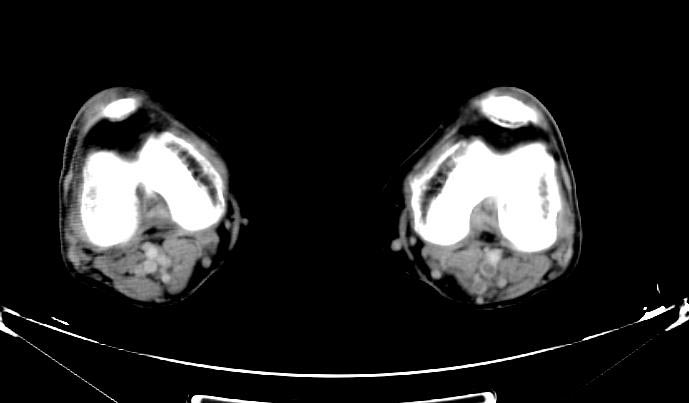Deep vein thrombosis CT
Editor(s)-In-Chief: The APEX Trial Investigators, C. Michael Gibson, M.S., M.D. [1]; Associate Editor(s)-In-Chief: Cafer Zorkun, M.D., Ph.D. [2] Ujjwal Rastogi, MBBS [3]; Kashish Goel, M.D.; Assistant Editor(s)-In-Chief: Justine Cadet
|
Deep Vein Thrombosis Microchapters |
|
Diagnosis |
|---|
|
Treatment |
|
Special Scenario |
|
Trials |
|
Case Studies |
|
Deep vein thrombosis CT On the Web |
|
Risk calculators and risk factors for Deep vein thrombosis CT |
Overview
Venous thrombosis in the proximal deep veins is responsible for more than 90% of the pulmonary embolisms. Some of the investigators have suggested combined use of CT PE protocol and CT scan venography in cases of suspected DVT and PE.[1] However, it is not done routinely in clinical settings because of certain limitations:
- Side effects of IV contrast administration
- Expensive modality
Uses
It may be considered and is preferred over contrast venography as there is no need to cannulate the foot veins, in the following setting:
- Compression ultrasonography is impractical because of excessive swelling, edema or leg cast, or nondiagnositc.
Example
- CT images: DVT at left leg
References
- ↑ Kanne JP, Lalani TA (2004). "Role of computed tomography and magnetic resonance imaging for deep venous thrombosis and pulmonary embolism". Circulation. 109 (12 Suppl 1): I15–21. doi:10.1161/01.CIR.0000122871.86662.72. PMID 15051664.

